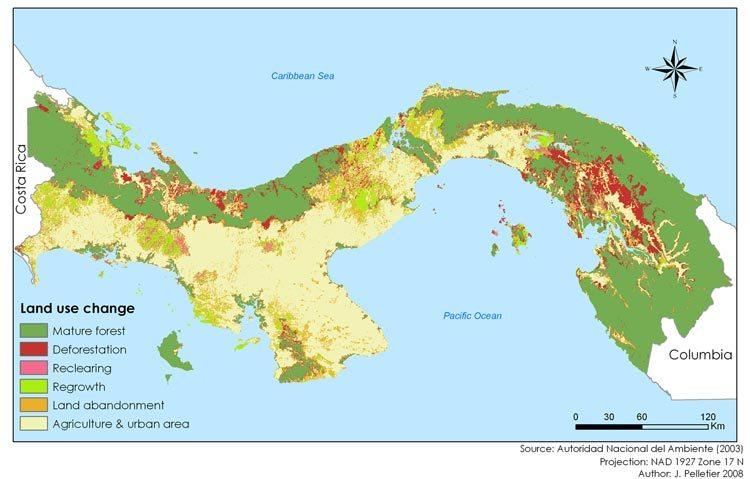
A groundbreaking initiative launched in Panama highlights the role agroforestry can play in promoting sustainable socioeconomic growth, combating climate change and enhancing the value of ecosystems.
Establishing a precedent-setting alliance, ANCON (Panama's Association for the Conservation of Nature), the Panama Association for Reforestation (ANARAP), and the Panama Chamber of Commerce, Industry & Agriculture (CCIAP) on June 17 announced a sweeping project that envisions forestation or reforestation of 1 million hectares (2.47 million acres) of land.
Dubbed the "Alliance for 1 Million," the 20-year forestation project has three main goals: strengthen sustainable development of Panama's forestry sector; help realize the goals elaborated in Panama's National Forestry Plan; and help Panama meets its pledge to reduce carbon and greenhouse gas emissions by capturing as much as 7 million metric tons of CO2 per year.
The 'Alliance for 1 Million'
The "Alliance for 1 Million” forestation plan was designed by Rita Spadafora, who was recently named ANCON's executive director, ANARAP Director Robert Kroesen and CCIAP President José Luis Ford.
As the parties explain in a news release, the intention is to realize the sustainable development potential of Panama's forestry sector, help meet its commitment to reduce emissions, and gain the support necessary to protect the nation's extensive forest areas and rich biodiversity.
Implementing the plan will promote commercial reforestation projects, ecosystems restoration, development of agroforestry livelihoods and sustainable management of natural forests -- a core element in the rural economy, Alliance partners highlight.
Panama has been losing forest at rate exceeding 20,000 hectares (49,400 acres) per year. Associated degradation of land and water resources is estimated to extend across a 2 million hectare (4.94 million acre) area. Panama has carried out reforestation efforts, but those have barely managed to forest just over 75,000 hectares (185,250 acres), only 14 percent of what has been destroyed.
Reforestation, dignified jobs and employment
The Alliance expects that with complementary measures in place, the initiative would not only result in reforestation of 1 million hectares over a 20-year period, but also produce benefits that include the creation of dignified jobs, increased exports and increased tax revenues.
In addition, the alliance partners estimate that achieving the plan's goals would capture 7 million metric tons of carbon dioxide (CO2) per year; generate clean, renewable energy; reduce deforestation; and attract as much as $1 billion of investment to Panama's forestry sector in the first five years.
A public-private partnership for forest conservation and sustainable development
The “Alliance for 1 Million” plan's authors note that implementing the plan will require the participation and support of the new Panamanian government, NGOs, investors and civil society. Realizing the Alliance's goals, they elaborate, requires strengthening the institutional framework for promoting sustainable development of Panama's forestry sector.
That includes adoption of a new forestry law, defining forest land management best practices, promotion of a National Forestry Development Plan, and assuring the security of new investments in the forestry sector.
As Ms. Spadafora pointed out, the “Alliance for 1 Million” partnership is “the first step to lobby for a new forestry law that provides incentives for the conservation of natural forests and reforestation in Panama.”
Image credits: 1) Marcos Guerra, STRI; 2) Aide et al; Online August 3, 2012. Deforestation and reforestation of Latin America and the Caribbean (2001-2010); 3) Panama Autoridad Nacional del Ambiente (ANAM)

An experienced, independent journalist, editor and researcher, Andrew has crisscrossed the globe while reporting on sustainability, corporate social responsibility, social and environmental entrepreneurship, renewable energy, energy efficiency and clean technology. He studied geology at CU, Boulder, has an MBA in finance from Pace University, and completed a certificate program in international governance for biodiversity at UN University in Japan.














